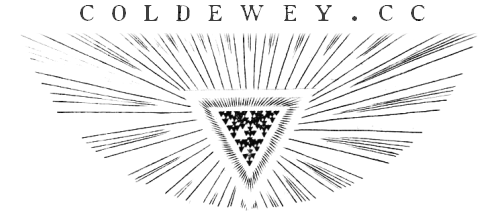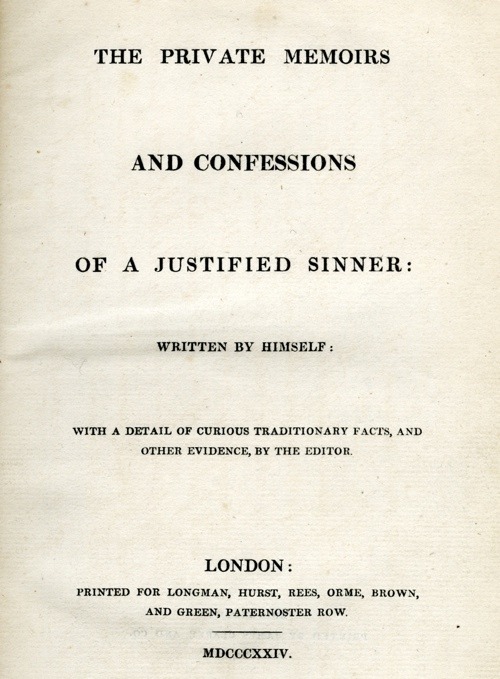This interesting book was put in my hands by a good friend whose literary suggestions are sound without exception. It is not, as the title may suggest, a tell-all like Pepys’ diaries, or even, really, a private memoir at all. It’s a striking early example of nontraditional narrative structure, predating many other adventurous novels and reportedly inspiring Stevenson’s Jekyll & Hyde.
It’s remarkable for the transparency of its misdirection, which leaves the reader constantly unsure exactly what is true, and rarely pins anything down with certainty. So the reader, like the protagonist in fact ends up at one point in the novel, is suspended between several points of view and unable to make any definite conclusions. It begins with an “Editor’s narrative,” which describes a series of events at the turn of the 17th century involving two sons of a Scottish Laird, one of whom is disowned and becomes a religious zealot who torments and eventually kills the other for, apparently, no reason. Then follow the actual confessions, which are written by the religious brother, Robert, and seem to describe a descent into depravity and madness, accompanied and prompted by someone who may or may not be the devil. Last, there is a continuation of the editor’s narrative, which describes how the text was found.
As others have pointed out, this means the story is in a way told backwards; it would be far more logical to describe how the text was come across and its context, then present the text itself, then produce some criticism or notes to aid in its interpretation. Yet the point of the novel isn’t just to tell a story, though the story of how absolute certainty in an idea can, and in a way must, lead to the worst atrocities, is certainly interesting enough.
Yet it is not to be taken as an anti-religious book, exactly. It is certainly critical of the Calvinist doctrines to which Robert adheres, and acts as a warning of religious irrationality, but it has no issue with faith or worship. In this it is a very interesting document, though not having lived in the period in which it was written, I can’t speak to how rare this idea of moderatism was. The way Robert himself justifies his acts through scripture and the like (though the “Justified” in the title refers to a specific doctrine, elected infallibility) is certainly cutting, however, and any religious reader would perhaps sense a latent tone of reproval.
The deconstruction of knowledge and identity throughout the book is complete. The reader is sure he is coming into the confessions with the “truth” in hand via the editor, but that starts to prove inadequate, especially after the second editor’s narrative. And in the confessions themselves, it becomes bafflingly unclear just what is real, what is not, and how much Robert’s account can even be trusted. He admits to large periods of memory loss, and notes of some accounts he gives that he has altered them on his companion’s suggestion.
Some might suggest it to be a purely psychological narrative, but one of the few things that is made clear in the book is that Robert’s subversive friend, Gil-Martin, is not a figure of his imagination. Many of Robert’s acts could be chalked up to insanity or belligerent zealotry, but the story doesn’t make sense unless Gil-Martin is real to everyone, not just Robert. But their identities are blurred time and again, and it is maddening but compelling to try to unravel the knot. It is in vain, though: the book offers no complete solutions, and much is deliberately left unsaid, or incomplete.
It’s not for everyone, and not really an easy read (some history of the area and religious conflicts are necessary, and long periods of Scots dialogue may cause even the most devoted dialect-writing fans to blink), but it is an excellent reminder of how interesting and original ideas are often found earlier than you expect. The dual-identity problem in this book is more subtle and more complex than the rather crude one in Stevenson, though of course they have different objects. And the subversion of truth and narrative style are masterfully done. A very unique book and one well worth the time of the interested reader.

